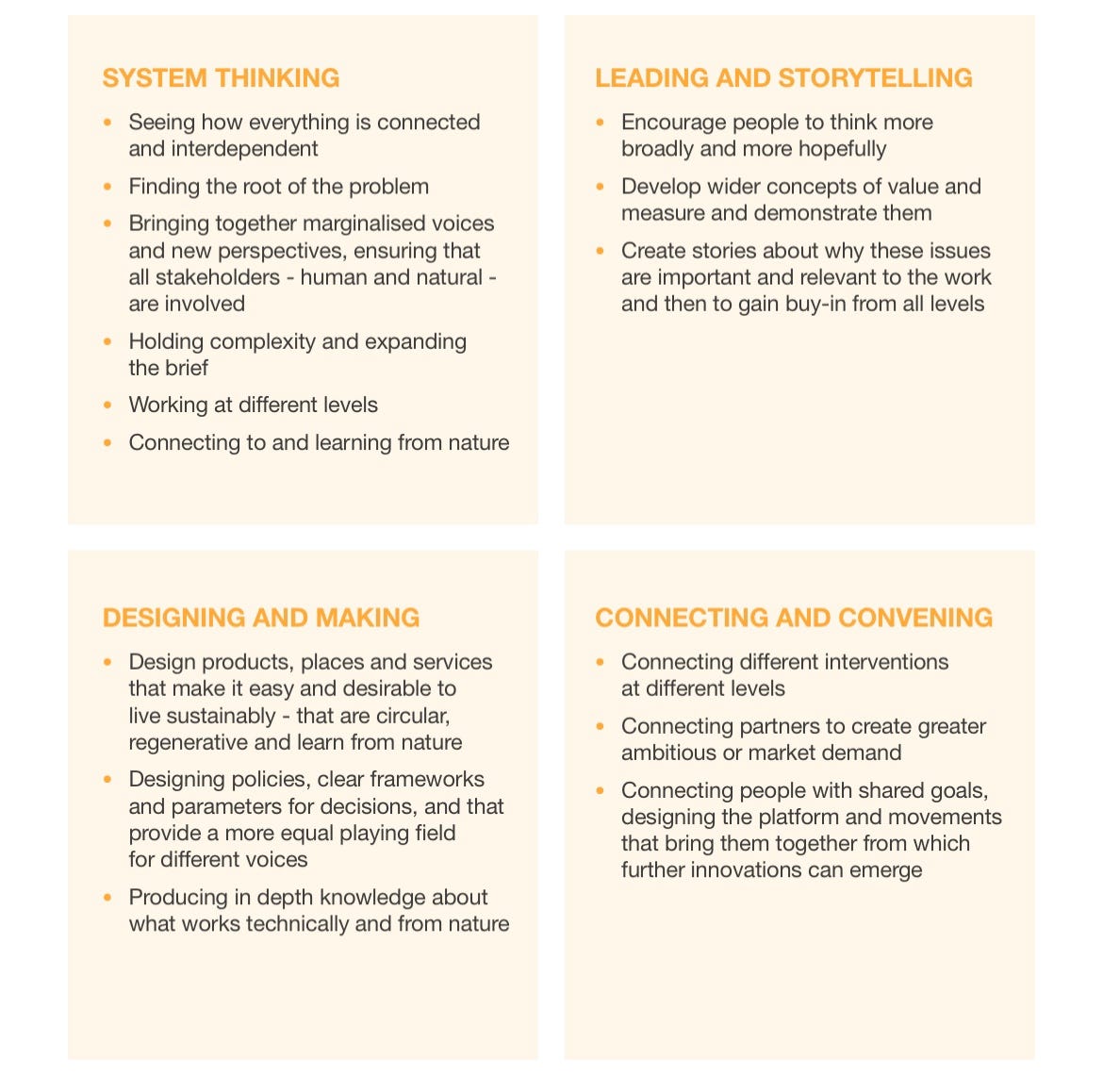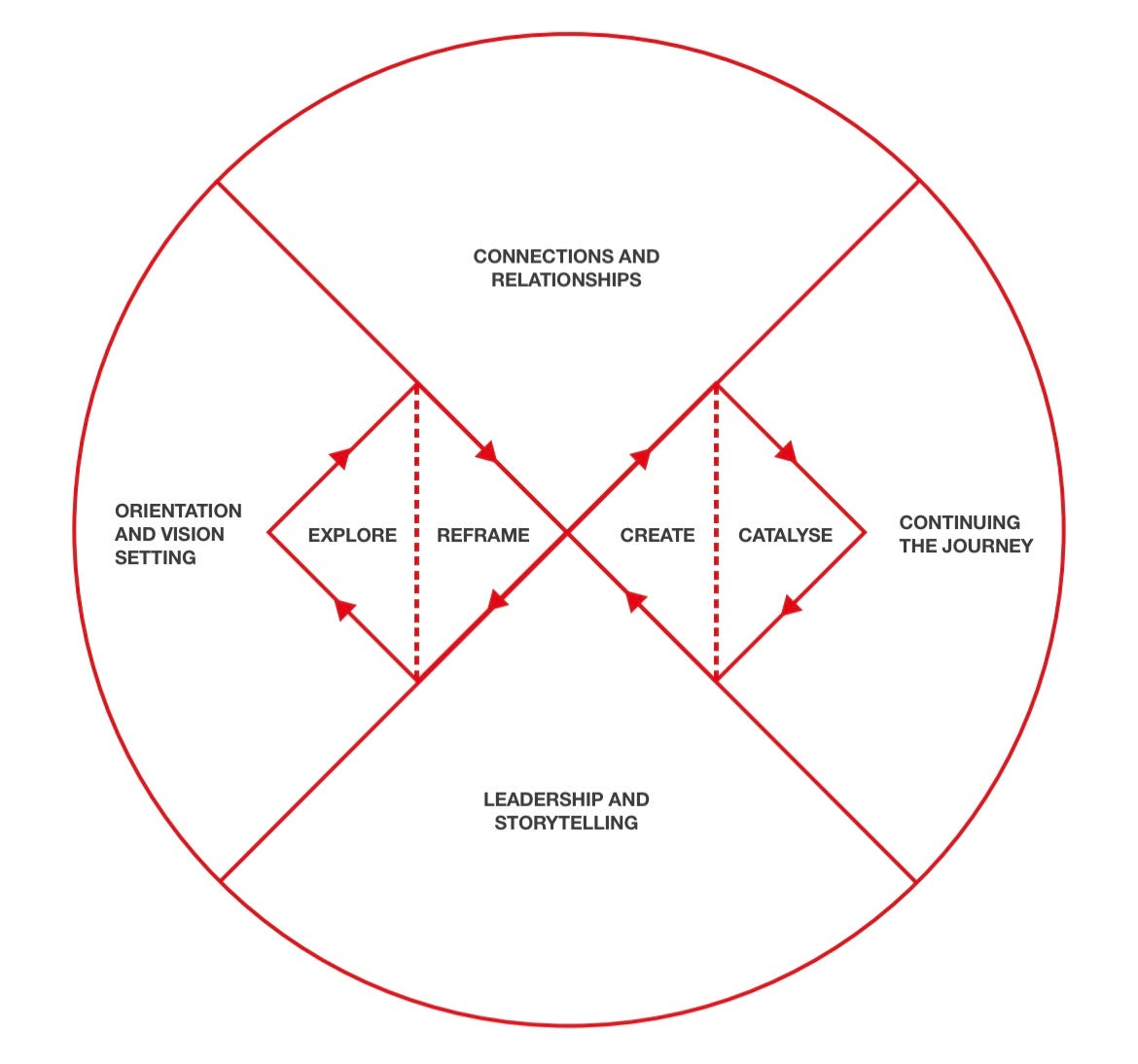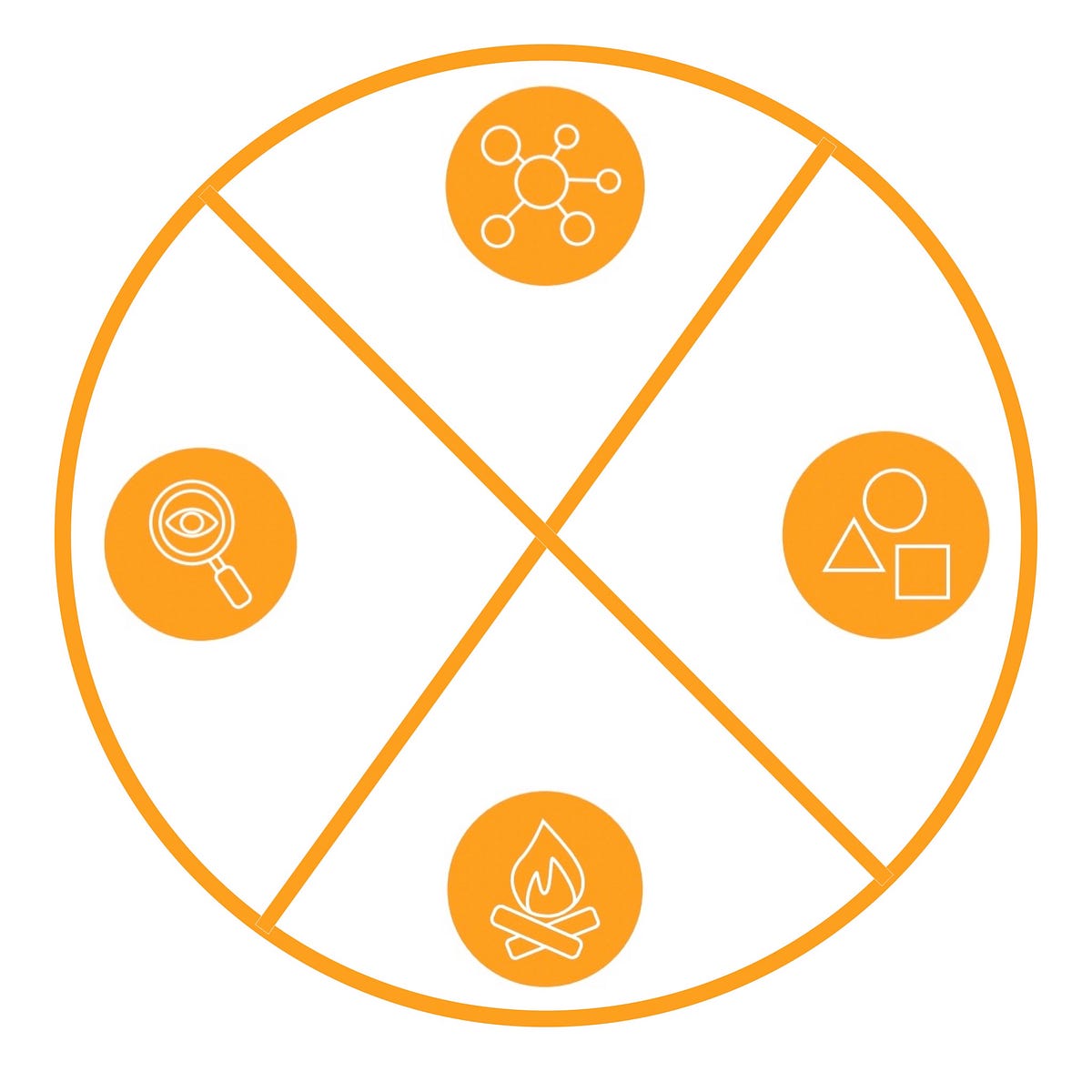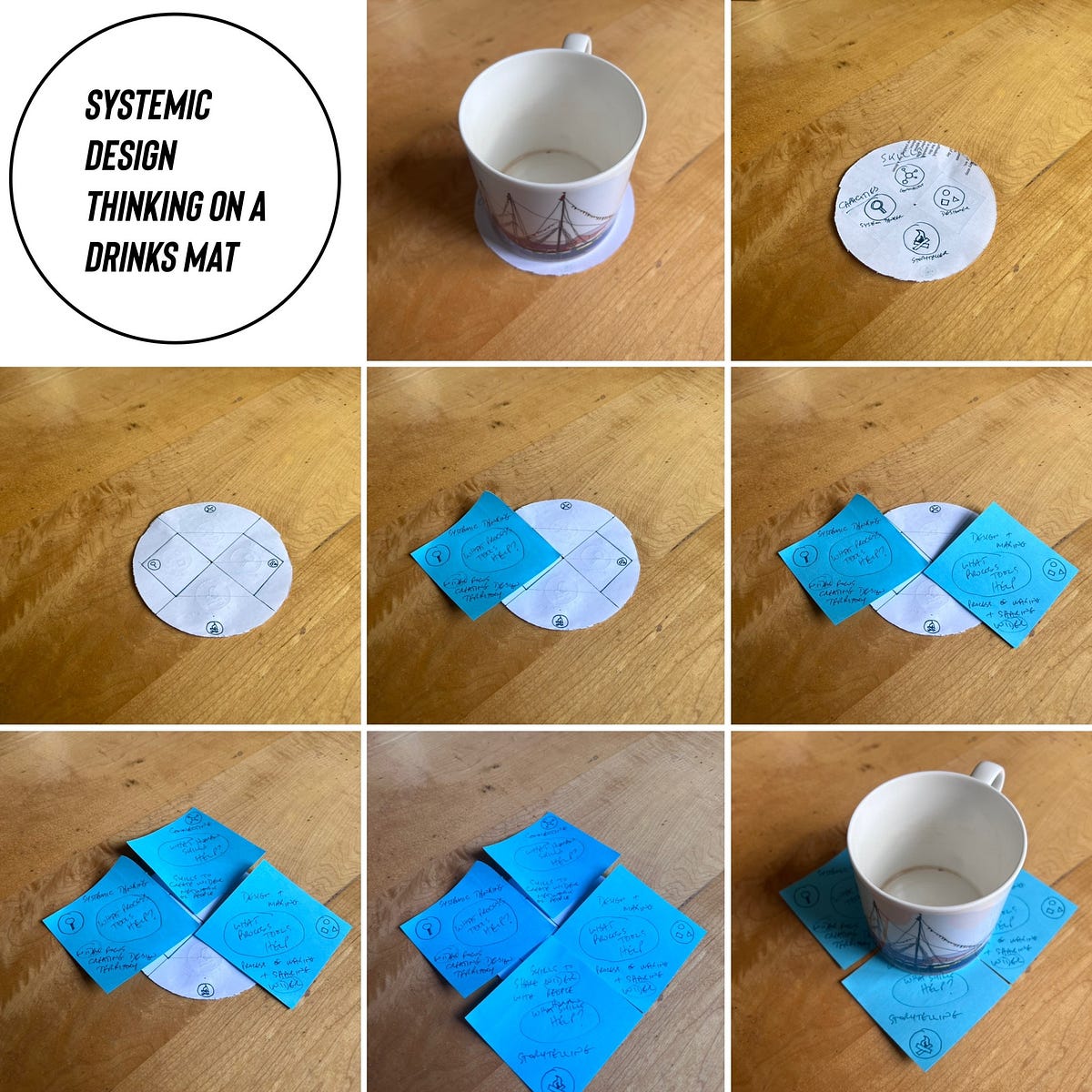I am working on the design of a few workshops for the Design Council in the UK. They are all around the theme of Design For Planet and more particularly the Systemic Design Framework and Toolkit. There are a lot of diagrams, tools and icons in all this. How to create a coherent workshop sequence from so many topics and layers is tricky.
However, I have gone back to human centered design as a way to sort this out. Using the personal perspective, the individual sense of being, the human need to define the approach.
Four Skills

In the Design Council’s Beyond Net Zero report, there is a definition of the four characteristics of change makers. These are personal attributes (skills or knowledge) that people have or learn to enable change.
- System thinker
- Leader and storyteller
- Designer and maker
- Connector and convenor
Not every person will possess all these abilities.
There is the phrase in digital industry of Full Stack Developer – a unicorn-like person with all the skills for a whole project. It’s an impossible dream. It’s also an unhelpful dream as it centres and compacts skills within one person. That individualism is not helpful when any successful project demands many people, from many places, working and sharing together. What is useful is to allow people to judge their own skill levels and gaps in knowledge or capacity.

This chart of capabilities is useful for enabling a person to think of what they can do, want to do and who they want to meet or need to involve to create change.
The four characteristics created a human space for thinking about personal and communal skills sharing and learning.
Recognising and making spaces is good for designing a workshop. This creates a sense of who to invite, how to welcome and what to do together.
A framework

The Beyond Net Zero report also includes an extended version of the classic Double Diamond Design Thinking model (developed originally by the Design Council).
This extended version broadens out the design process at start and finish (who to involve responsibly and how to carry on sustainably). It also expands out skills needed for design (into connecting, leadership and storytelling).
The model is also helpful in creating a space. The systemic design process is a space for tools and methods that people can use in different contexts. Design thinking can become a thin pipeline obsessed with speed and delivery. Expanding the space can both slow the process down and widen out what is meant by successful delivery (in different times and places).
Two models at a weird angle

In the original report, for me, there was a slight glitch between the models.
The four characteristics was a quadrant with horizontal and vertical lines. The framework had diagonal lines. They do not overlay cleanly. It is harder to move perspectives from human, thru communal, to system layers.
I nudged the characteristics round a bit.

System thinker to left and Designer to right. That horizontal angle aligns with the systemic frameworks process angle.
Convenor at top and Storyteller to bottom. These align with the systemic frameworks human skill spaces.
Making a narrative for a workshop
With alignment of design process direction and human spaces, it is possible to develop a narrative for a workshop and a way of using tools and activities to draw participants along.

Applying a systemic design framework to Net Zero and Design For Planet issues is good but where do you start? So many people, from so many places, with such a diversity of capabilities and a divergence of specific issues to deal with.
Again: center to the person.
The systemic is useful once a person has a sense of their place, their value, their alignment and their needs.
Start with sharing a drink.
Start with a drinks mat.

The mat has two sides: one on characteristics and the other on systemic framework.
Start by chatting about what people feel are their strengths. What they feel is missing. Who they think is missing.
Build the communal human space.
Once you have that space, flip the mat over to start building the other axis: the systemic process of a project. Provide a map of a bounded space with a sense of direction.
Show how that systemic space is extended by the human space.
Now, you have space to talk about learning new methods and using new tools.
The workshop on using a systemic design toolkit is thus rooted in human space, given direction by process flow and then provides skills and tools relevant to where people think they are and need to go.
Anchoring to human perspectives and shared skills is the way I find meaning in the systemic framework and the tools needed by that process.
Come along
I am testing the workshop materials and facilitation issues in a series of free workshops in late April 2023.
They will be:-
- Stroud (definitely on 19th April at The Sub Rooms from 10am to 4.30pm)
- Bristol (probably 20th April, waiting on venue confirmation)
- London (probably 25th April, waiting on venue confirmation)
- Online (definitely on 27th April on Zoom from 1pm to 7.30pm (UK time))
The in-person workshops have limited space availability.
If you want to attend, please contact me. My email is a.somerville@acuity.design